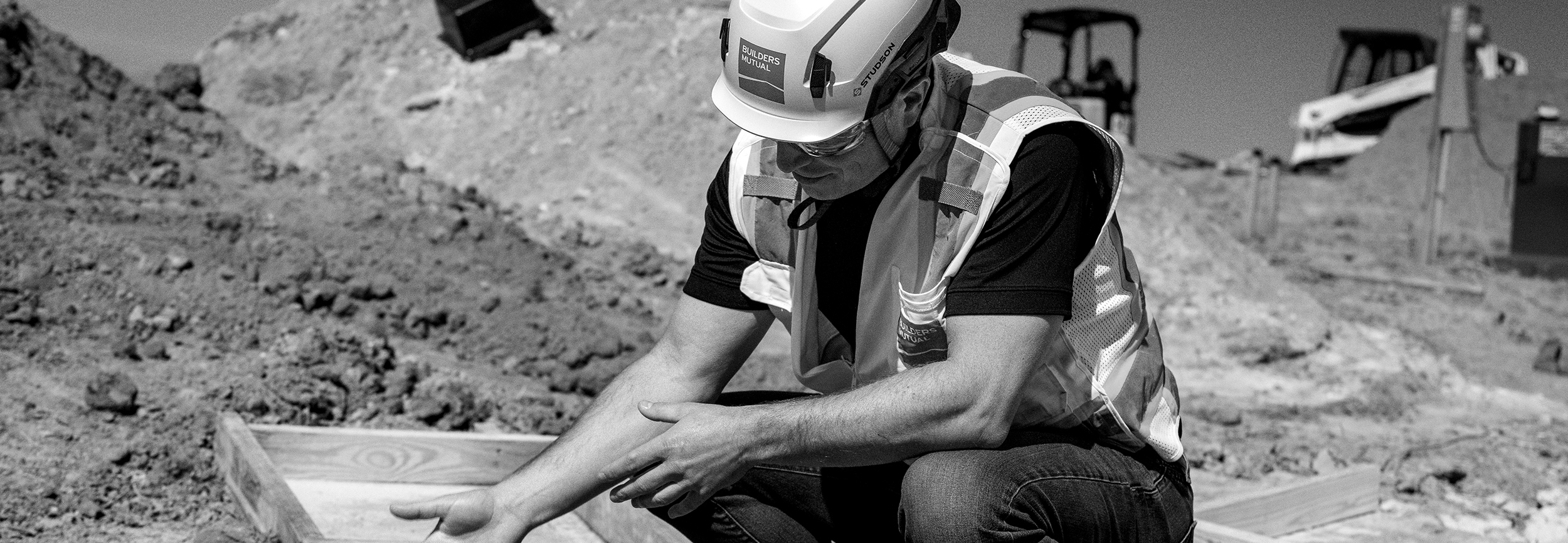In an ideal world, new hires would arrive at your job-site on day one with proven skills, a commitment to safety, and a willingness to learn how your company gets things done. But that’s not the world we currently live in.
A shortage of skilled construction workers today means you may need to hire employees who have never stepped foot on a job-site before. The potential downside: their lack of experience could turn into low productivity and a high risk of accidents.
That’s where new employee training comes in. Getting your new hires up to speed – and then putting them on a path of continuous learning – can make the difference between long-term success and constantly dipping back into the labor pool, only to come up empty again.
Lou Bueno, Senior Risk Management Consultant from Builders Mutual, walks us through the elements of an effective new hire training program that addresses the challenges facing both workers and supervisors.
First, is training worth it?
With contractors responsible for new business, customer service, supply chains, logistics, and scheduling, spending the time and resources on training may not seem worth the expense. New workers will eventually figure things out. Bueno actually had a contractor tell him, when asked what fall-prevention training he had in place, “Falling will teach my workers what not to do the next time.”
This type of thinking is counterproductive, because training does more than protect workers; it also helps protect a contractor’s bottom line. According to the Construction Industry Institute:
- Investing 1 percent of a project’s budget in employee training increases productivity by 11 percent.
- Companies that invest in employee training observe that rework decreases by an average of 23 percent.
- Training in construction increased retention rates by 14 percent and decreased absenteeism by 15 percent.
Engage employees – on their terms
New employees come to your job-site with not just a range of skills – but also with a range of learning styles. Here are some tips to connect with all types of learners:
Use clear visuals. Not everyone learns from reading. In fact, some crews, in Bueno’s experience, don’t have more than a second-grade education. Bueno prefers to show pictures and videos of workers performing tasks or using equipment properly. After showing the visuals, Bueno will ask workers questions about what they just saw, making sure they understand what’s being taught and have picked up the important points.
Make learning hands-on. It’s one thing to see someone else go up on a roof. It’s another to do it yourself. Using hands-on demonstrations reinforces the lessons from a Toolbox Talk or safety video and allows supervisors to introduce storytelling into the training, which Bueno has found creates stronger connections between a trainee and the material. Plus, seeing a worker in action gives foremen the opportunity to praise good behavior or correct improper techniques.
Stress safety. New hires have to do more than learn how to install a roof or shore a trench. They have to do it safely. Without proper safety training, workers risk injuring themselves and their colleagues, jeopardizing their health and the job itself. A good place to start for safety training is the WorkSafe Basics book from Builders Mutual.
Go small. Many companies invest in all-employee training meetings that can include groups of more than 100 employees. In Bueno’s experience, no more than 10-15 employees at these meetings are actively engaged in learning. Instead, pair supervisors with small groups of workers, where they can shift the focus to coaching and have time for questions and feedback.
Speak their language. Many crews come from all parts of the world, including places that don’t speak English or Spanish. When language is a barrier to understanding, it’s even more important to incorporate visual aids into your training or use show-and-tell type demonstrations, such as ones that show how to properly wear personal protective equipment.
Better training starts with the supervisors
If you have a job-site plagued by accidents and low productivity, new hires are an easy target to blame. But if they’re not following directions and are making costly errors, it means that supervisors have not trained them in a sufficiently engaging manner, Bueno says.
That’s why “training the trainers” is one of Bueno’s first priorities when he’s helping customers elevate their learning programs. Here are some ways supervisors can improve as trainers:
Go above and beyond. When setting training goals, many supervisors align them with OSHA guidelines. However, this standard represents the bare minimum. Supervisors should always try to reach the next level in terms of improving safety. That includes doing more than having employees fill out a sign-in sheet proving they attended training. Assessments and follow-up observations should be performed to improve workers’ readiness to work safely.
Be positive. No one likes to be yelled at or constantly criticized, especially when they’re doing an often-dangerous job. Be patient with new hires, guiding them with hands-on demonstrations and encouraging progress.
Assess your own performance. Supervisors are more experienced and often more educated than the workers who report to them. But that doesn’t mean they know how to train other people, especially those who lack experience and education. Bueno says supervisors should be asking themselves these three questions to gauge their performance:
- How confident are you in training?
- How are you connecting to your workers on an individual basis?
- How do you verify learning?
With answers to these questions, supervisors can evaluate their strengths as well as any gaps in their training approach.
Resources to take your training to a higher level
Training new hires is an undeniably large investment. But contractors don’t have to do it alone.
Bueno and his team members at Builders Mutual can support contractors’ unique training needs with handouts, videos, and custom service programs – in both English and Spanish. In Florida, where Bueno works, Builders Mutual partners with colleges that provide classes and curriculum to local builders.




 Find an
Find an